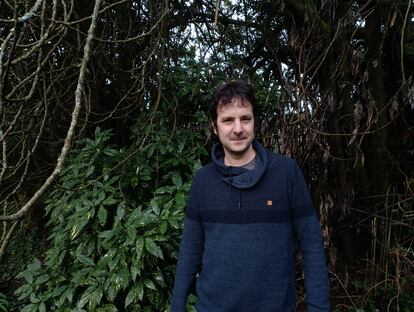The enigma of the Viking world’s lost diversity
The remains of hundreds of people buried in Scandinavia over the last two millennia reveal that there was greater genetic variety during the age of the Norse warriors than today
In the summer of 1901, when an old river dam burst near a centuries-old silver mine in the Swedish village of Sala, two Viking burial ships emerged from the bowels of the earth. On one of the boats, which had been buried (circa 950) on a small river island, Oscar Almgren, the first archaeologist to arrive at the site, found the remains of a woman lying face up, with three brooches on her chest and her head facing the sunset. Now, DNA analysis of her bones, as well as those of 300 other ancient individuals found throughout Scandinavia, has led to a surprising finding: the remains from Viking times had more foreign genetic traces than today’s Swedes who have four grandparents from the same region. That genetic variety vanished in a short period of time. Now, the important question is why.
The genes of the woman who received an honorable burial in the heart of the Viking world reveal that she was probably the daughter of two parents from the British Isles. Her teeth provide another important clue. Every world region’s soil has a unique profile of strontium atoms, a metal that gets into food and accumulates in human teeth. According to a study led by Stockholm University geneticist Ricardo Rodríguez Varela, the molars of the woman on the funeral ship suggest that she was born and raised in present-day Sweden. “In Viking populations, there is a higher proportion of people with ancestry from the British Isles, the eastern Baltic Sea and southern Europe than in present-day Scandinavian populations. Why has that non-local gene flow decreased?” asks the 39-year-old, Spanish-born researcher.
Rodríguez Varela’s team analyzed the genetic structure of Scandinavians – Swedes, Danes and Norwegians – from the last two millennia, including the Viking period (750–1050). The intriguing results of his study appeared on Thursday on the cover of the professional journal Cell. In his article, Rodríguez Varela advances three hypotheses, which are not mutually exclusive. He argues that perhaps some of the 300 ancient individuals analyzed were slaves, monks, Christian missionaries or simply travelers who were passing through and died without leaving descendants. Another related thesis is that those migrants’ burial rites were different from those of the local populations. In fact, cremation was the main option during much of the Viking Age, so DNA cannot be collected from many graves. The third (and more unlikely) possibility is that later migrations without these European components diluted the variety observed in Viking times.
“It’s similar to if the United States collapsed, and a thousand years from now, you went back to analyze the population of New York and found that it’s no longer as diverse. In Viking times, the region must have been an important trade center, with all types of professionals passing through who died there without leaving as many descendants as one might expect,” reflects Rodríguez Varela. The geneticist’s analysis includes the genomes of almost 17,000 present-day Scandinavians, each of whom have four local grandparents, as well as human remains from known archaeological sites, such as the Swedish Kronan warship’s wreckage from 1676. One of the study’s coauthor’s is the visionary Icelandic physician Kári Stefánsson, who founded deCODE, a company that has analyzed the DNA of hundreds of thousands of people in search of genetic variants that are associated with common diseases, such as cancer and Alzheimer’s disease.

Swedish biologist Svante Pääbo, who learned to read ancient DNA, won the most recent Nobel Prize for Medicine. One of his disciples, American geneticist David Reich, has described this revolution – which started just over a decade ago – using two illustrative comparisons. “After a grenade explosion in a room, could the exact position of each object prior to the explosion be reconstructed by piecing together the scattered remains and studying the shrapnel in the wall? Could languages long extinct be recalled by unsealing a cave still reverberating with the echoes of words spoken there thousands of years ago?” Reich asked in his book Who We Are and How We Got Here: Ancient DNA and the New Science of the Human Past. “Today, ancient DNA is enabling this kind of detailed reconstruction of deep relationships among ancient human populations,” he said, celebrating of the field’s achievements.
A couple of years ago, another genetic study of some 400 skeletons also shed light on the Viking era. In it, researchers debunked the stereotype of Vikings as a ruthless, blond warrior people dedicated to piracy and the plunder of the European seas, a caricature that often appears in the movies. In fact, according to a study conducted by University of Cambridge biologist Eske Willerslev’s laboratory, many Vikings had dark or brown hair. Migrants from Asia and southern Europe influenced the DNA of Scandinavians both before and during the Viking Age.
As Rodríguez Varela explains: “There are a lot of stereotypes. During the Viking period, not all Scandinavians were Vikings. Being a Viking was like a profession for some groups.” In the region, it was more common to engage in agriculture, livestock, fishing or trade, not sail the seas armed with swords to look for slaves in other places, although that also happened. Rodríguez Varela’s team has observed that women with ancestry from the eastern Baltic and, to a lesser extent, the British Isles have contributed more to the Scandinavian gene pool since Viking times than men from the same places. “That may be because there were more women or because they were more likely to have offspring. It is difficult to make conjectures. The Vikings, especially those from present-day Sweden, raided the eastern Baltic a lot,” says the researcher.
However, Rodríguez Varela points to other possible explanations, beyond outright slavery. “At that time, they were powerful groups that were expanding eastward. There may have been a lot of arranged marriages with women from today’s Baltic countries through agreements with local chiefs. Those women went to Sweden, which is why we see more genes with ancestry from the eastern Baltic area. In these cases, you can never give a simple answer,” he says.
Sign up for our weekly newsletter to get more English-language news coverage from EL PAÍS USA Edition
Tu suscripción se está usando en otro dispositivo
¿Quieres añadir otro usuario a tu suscripción?
Si continúas leyendo en este dispositivo, no se podrá leer en el otro.
FlechaTu suscripción se está usando en otro dispositivo y solo puedes acceder a EL PAÍS desde un dispositivo a la vez.
Si quieres compartir tu cuenta, cambia tu suscripción a la modalidad Premium, así podrás añadir otro usuario. Cada uno accederá con su propia cuenta de email, lo que os permitirá personalizar vuestra experiencia en EL PAÍS.
¿Tienes una suscripción de empresa? Accede aquí para contratar más cuentas.
En el caso de no saber quién está usando tu cuenta, te recomendamos cambiar tu contraseña aquí.
Si decides continuar compartiendo tu cuenta, este mensaje se mostrará en tu dispositivo y en el de la otra persona que está usando tu cuenta de forma indefinida, afectando a tu experiencia de lectura. Puedes consultar aquí los términos y condiciones de la suscripción digital.
More information
Últimas noticias
The complicated life of Francesca Albanese: A rising figure in Italy but barred from every bank by Trump’s sanctions
Pinochet’s victims grapple with José Antonio Kast’s rise in Chile
Reinhard Genzel, Nobel laureate in physics: ‘One-minute videos will never give you the truth’
Half of Scotland is in the hands of 420 property owners
Most viewed
- Pablo Escobar’s hippos: A serious environmental problem, 40 years on
- Why we lost the habit of sleeping in two segments and how that changed our sense of time
- Trump’s obsession with putting his name on everything is unprecedented in the United States
- Charles Dubouloz, mountaineering star, retires at 36 with a farewell tour inspired by Walter Bonatti
- The Florida Keys tourist paradise is besieged by immigration agents: ‘We’ve never seen anything like this’











































